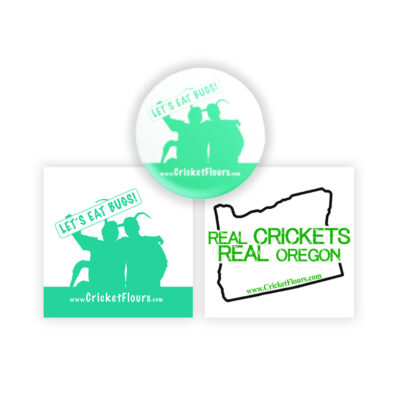Cricket Flour Frequently Asked Questions
Welcome to our FAQ page for Cricket Flours! While 80% of the world currently eats insects in their diets, eating crickets is a new and emerging trend here in North America. Because cricket protein is a new ingredient, we have received a lot of questions since launching our company and website at www.CricketFlours.com. We have included some of the frequent questions we receive from new customers and people interested in this new alternative source of protein and nutrition.
What is cricket flour?
What is cricket protein powder?
Cricket protein powder is made from crickets, and the main ingredient is cricket flour. Cricket protein powder provides a full nutritional profile and amino acids and BCAAs important in creating the best cricket protein powder. Because cricket protein powder and cricket protein supplements use full crickets, they provide a cleaner source of digestible protein that is less processed and contains naturally occurring calcium, iron, B12, and more. Cricket flour or cricket protein powder is naturally high in protein, so check out more nutrition information and product details by clicking here!
How do you ship your Cricket Flours products?
We ship the majority of our products that are found in our Cricket Flour Store through the United States Postal Service. Once your order is placed through our store, our team packs and ships your order in 3-5 business days on average, and often sooner when we can. For packages under 1lb in shipping weight we generally ship using First Class Shipping. Orders over 1lb get automatically upgraded to Priority Rate Shipping. If you have any concerns about shipping dates or would like to expedite an order, please send us a message here.
What is your Cricket Flours return policy?
Our return policy lasts 30 days. If 30 days have gone by since your purchase, unfortunately, we can’t offer you a refund or exchange. If you experience a problem with any of our products or shipping within the 30 days— please let us know. Let’s figure out a way to make it right!
We cannot replace or refund orders that were shipped, delayed, spoiled, or returned due to an incorrect or undeliverable shipping address. That said, we want to keep you in our Cricket Club. So if you have any concerns with your order, please go ahead and send us a message and we’ll see what we can do!
Can I bake with cricket flour or cricket powder?
Are there cricket allergies?
What do crickets eat?
How much protein in a cricket?
Dried and roasted crickets contain an average of 55-70% protein by weight. While nutrition and feed used to raise crickets can have an impact on the final nutritional details, we have included some additional details on the protein in a cricket and nutrition that can be found here.

